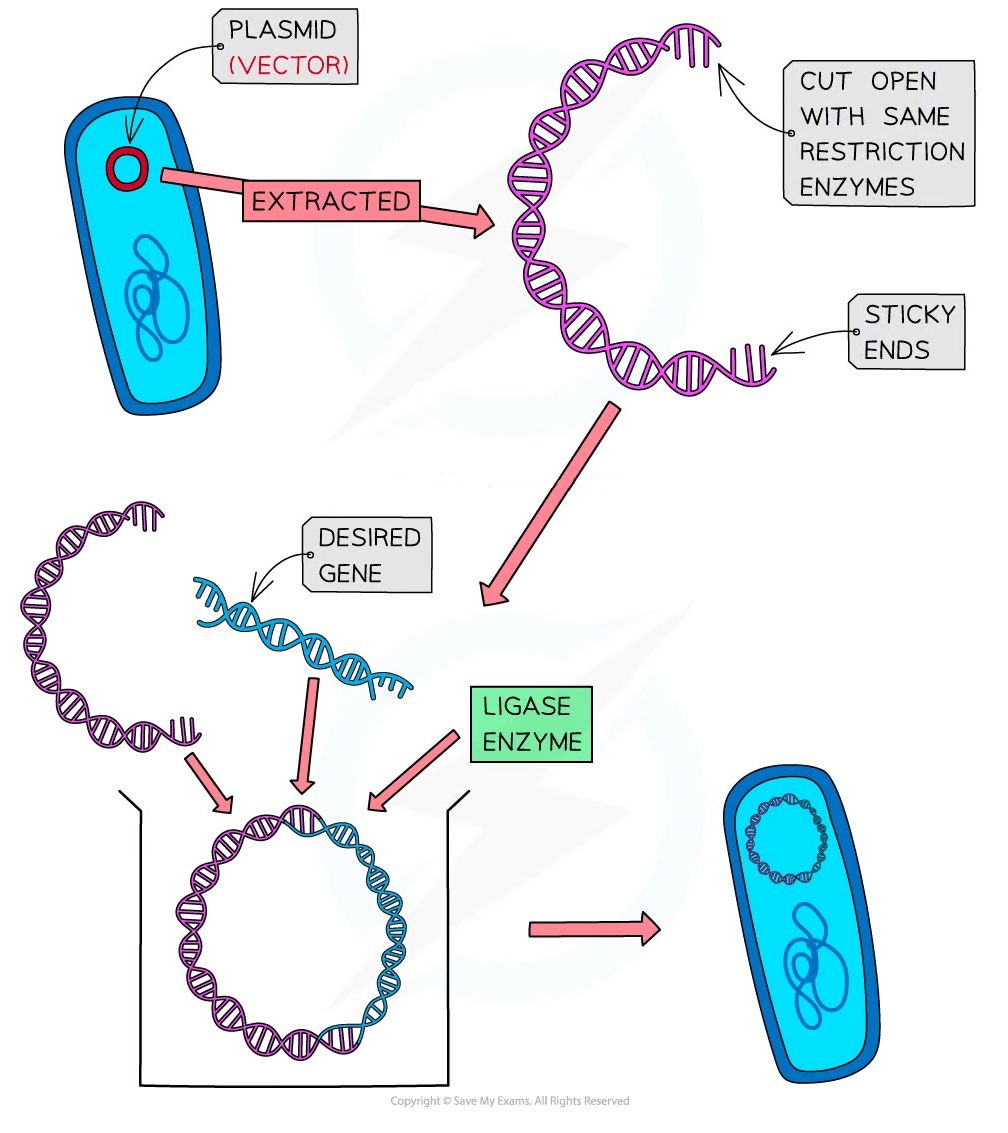Genetic Engineering: Vectors (Cambridge (CIE) A Level Biology): Revision Note
Exam code: 9700
Genetic engineering: vectors
Vectors are used to transfer the desired genes into a foreign cell
Plasmids are the most commonly used vector but viruses and liposomes (a small vesicle with a phospholipid layer) can also be used to transfer genes
Plasmids
Plasmids are small, circular rings of double-stranded DNA
They occur naturally in bacteria, but can also be found in archaea and eukaryotic organisms (e.g., yeast and fungi) and can contain genes for antibiotic resistance
Plasmids are used as they can self-replicate
A plasmid is used to transfer the desired gene to a new organism
To insert the desired gene into the circular DNA of the plasmid it is ‘cut’ open
The same restriction endonuclease that was used to isolate the desired gene is used to ‘cut’ open the plasmid
This results in the plasmid having complementary sticky ends to the sticky ends on the desired gene fragment
DNA ligase forms phosphodiester bonds between the sugar-phosphate backbone of the DNA fragment and the plasmid to form a recombinant plasmid (a closed circle of double-stranded DNA containing the desired gene)
Scientists can modify bacterial plasmids or produce them artificially
One benefit of this is that the plasmids can have one or more marker genes so that cells that have the recombinant plasmids can be identified
Plasmids are transferred into host cells (usually bacteria) by a process called transformation
Only a small proportion of bacteria will become transformed and markers are used to identify transformed cells
Transformation can occur by:
Bathing the plasmids and bacteria in an ice-cold calcium chloride solution and then briefly incubating at 40°C
This makes the bacterial membrane permeable
Electroporation - where the bacteria are given a small electrical shock, making the membranes very porous (this technique can be used to get DNA fragments into eukaryotic cells)

Examiner Tips and Tricks
Remember, two enzymes are used in the preparation of a plasmid vector – restriction endonucleases and DNA ligase. Also, the same restriction endonuclease must be used to ‘cut’ open the plasmid as was used to isolate the desired gene.

Unlock more, it's free!
Did this page help you?